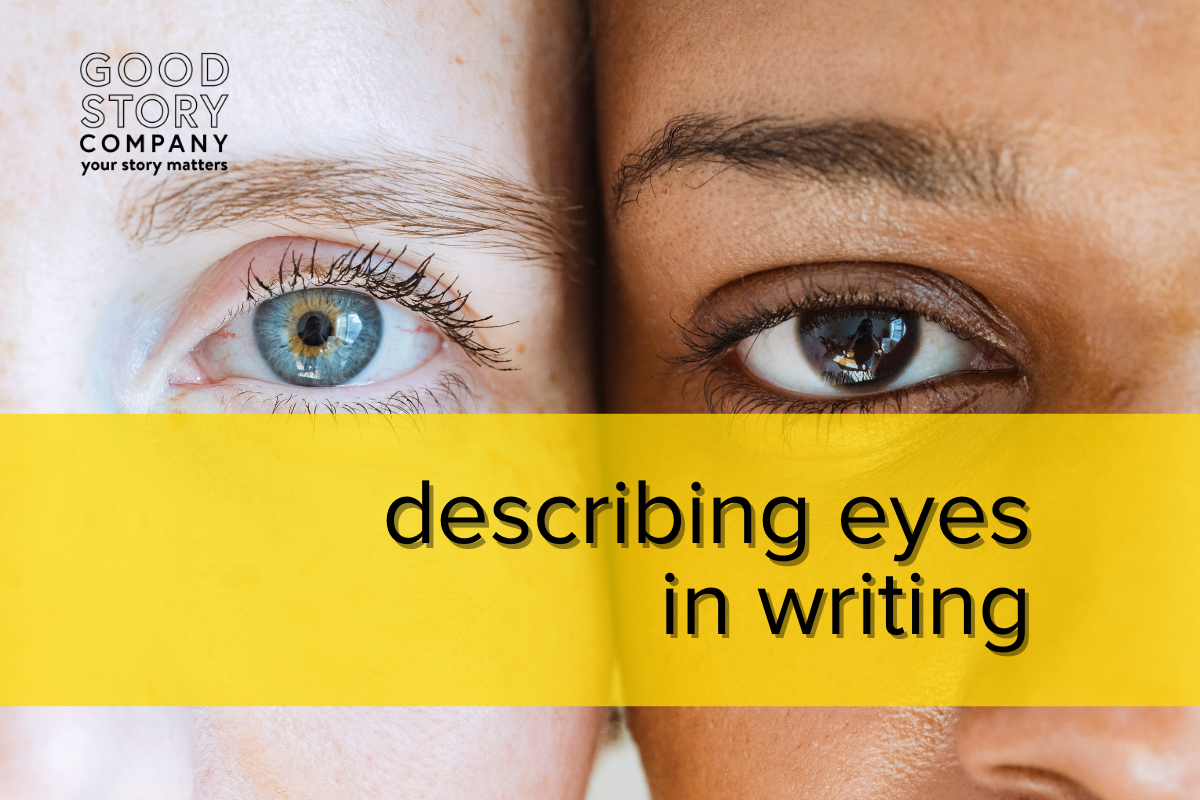Describing Eyes in Writing
Describing eyes in writing is pretty important—and it has a long history.
Eyes are the windows to our souls.
Our lives flash before our eyes.
A happy couple has stars in their eyes, but Grandma is giving them the eye.
She has eyes bigger than her stomach. Mom has eyes in the back of her head. Dad turns a blind eye.
There’s the apple of my eye, and I can have a bird’s-eye view when I hit the bull’s-eye in the public eye.
She wants to catch someone’s eye, but he’s crying his eyes out, so feast your eyes on this list of clichés about eyes! You won’t need an eagle eye.
I mean, I’d notice these eyes up close! But I prefer to keep more of a distance between myself and eyeballs.
From Oedipus to the Cullens, literature is full of descriptions of meaningful eyes. Given that long history—and that long list of clichés—there are also some traps that are easy to fall into. Sometimes the painstaking descriptions authors write of eyes, green flecked through with yellow or a charming shade of violet or black ones that darken to coal when the character is angry, seem like a little much.
After all, do you pay that much attention to people’s eyes? Maybe I’m speaking as a nearsighted writer whose own eyes hide behind glasses, but I don’t usually notice eye color unless it’s striking or unusual. Sometimes too much description of a pair of eyes can seem like cribbing from an author’s character notes rather than something authentic someone else would notice.
This is especially true when a unique eye color—lots of amber and violet eyes in literature, and not too many in real life!—is supposed to signal how special and unique a character is. It happens so often that it’s a bit tired. Characters of color, especially, don’t need to have a shocking pair of blue eyes in order to star as the protagonist of a novel.
Now, when you have a couple of characters staring into each others’ eyes, it does make sense to notice little gradations or specks of color. Still, romance writers are often cautioned against too much physical description about eyes or using them as an easy shorthand for everything physically and emotionally attractive about a character.
Why can’t I describe eyes all day?
Part of the problem is an overreliance on eyes—their shape, color, and movement—as a shorthand for interiority, which is almost always more important and interesting, and to give us a vibe rather than a realistic description. Consider outsourcing some of the narrowed eyes, quick glances, and meaningful stares. One trick I once learned is to substitute hands for eyes in a scene, if you find yourself over-reliant on eyes. A handshake can linger, fingers can drum, a character can worry their ring, they can stick their hands in their pockets, or clench their fists. Now, you don’t want to use so many meaningful hand gestures that they become the cliché. But if the balance tips too far towards eyes, consider shaking it up a bit.
You sort of can—if you use deep POV
Using deep point of view can also help describing eyes in writing feel authentic and engaging, rather than like a police report. A mother looking at her teenager’s makeup, lovers engrossed in each others’ eyes, a shifty passerby at a crime scene, an old man meeting his granddaughter, a criminal desperate to make a mark believe them—all of these characters have a good reason for their eyes to be described, and when its filtered through the character, it will help immerse us in the world.
That deep point of view will open up more than sparkling colors of eyes. The mother might notice garish eyeliner overpowering her daughter’s soft brown eyes. The lovers might be attuned to every blink, every nanosecond the other looks away. The shifty passerby might stare a little too long, looking away and then glancing back too many times, while hiding her eyes under oversized sunglasses. The old man might think how his granddaughter’s eye shape reminds him of his son’s, and the son watching might notice the sagging bags under his eyes as they fill with tears. The criminal might maintain eye contact long past what feels comfortable. Mining that deep point of view will take descriptions of eyes from clichéd “her eagle eyes noticed” or “his intense blue eyes gleamed with love” to something that feels real and character-based.
In short, don’t be afraid to describe eyes in your novel, but be purposeful about it, using deep point of view and staying away from clichés.
I’m staring into your eyes right now …
Let Amy turn an editorial eye toward your work at Good Story Editing.

